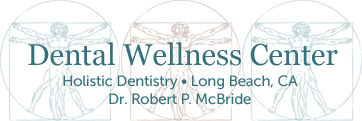Snoring and Sleep Apnea – Big Breakthrough
by Dr. McBride | Date Published: 2017-02-23 | Download PDF ![]()
Research shows that forty-five percent of normal adults snore at least occasionally and 25 percent are habitual snorers. Problem snoring is more frequent in males and overweight people and usually worsens with age. Snoring may be an indication of obstructed breathing, called Sleep Apnea, and should not be taken lightly. There are three recognized types of Sleep Apnea. Obstructive Sleep Apnea (OSA) is caused by airway blockage during sleep from the tongue relaxing and falling back into the throat. Another type is Central Sleep Apnea which occurs because the brain doesn’t send proper signals to the muscles that control breathing. The third type is a combination of the two. There are also three levels of OSA: Mild, Moderate and Severe.
Why is all this important to your health?
We need oxygen as part of the rejuvenation process that occurs during sleep. When it is impaired, the body cells aren’t getting enough oxygen for their normal repair process. This can cause an acidic systemic condition. Diseases such as cancer, heart disease and diabetes thrive in an acidic environment. Two early Nobel Prize winners, Dr.’s Alexis Carrel and Otto Warburg each recognized through their pioneering efforts the importance of oxygen delivery to all bodily cells to sustain their health.
What is Obstructive Sleep Apnea (OSA)
Obstructive Sleep Apnea is defined as a temporary suspension of breathing and is characterized by pauses in breathing or instances of infrequent breathing during sleep. Each pause in breathing, wherein one gasps for air is called an Apneic Event, and can last for several seconds to several minutes, and may occur 5 to 30 times or more in an hour. Partial blockage of the airway is called Hypopnea, resulting in shallow breathing or an abnormally low respiratory rate.
What are the best recognized treatments for Sleep Apnea?
First and foremost is obtaining an accurate diagnosis as to what type of Sleep Apnea may be present, as well as its level of severity. This can be done at a recognized Sleep Laboratory, or a Home Study wherein monitors are used to record Apneic or Hypopneic events that may occur during sleep. The term used in the measurement of Apneic or Hypopneic events during sleep is the Apnea-Hypopnea Index (AHI). Blood oxygen saturation is also determined, and the term for its measurement is SPO2 (Peripheral capillary oxygen saturation). If it is discovered through these tests that one has Moderate or Severe Sleep Apnea, a physician prescribes the recognized “gold standard” of treatment known as CPAP Therapy. This is the administration of pressurized air delivered from a CPAP machine or compressed air cylinder through a tube to a facial mask or nasal pillows. This treatment is effective; however it has a high rejection rate. Some aspects that contribute to its intolerance are: annoyance with the mask itself, discomfort from the constant air pressure, confusion about equipment function, embarrassment in front of a bed partner, and depression about having a sleep disorder.
Current Solutions
For years, dentistry has had solutions for snoring by means of oral “mouthpiece” devices that position the lower jaw forward (Mandibular Advancement Devices (MAD’s) to open the airway. This type device is also recommended by physicians as an alternate treatment for patients that cannot tolerate CPAP therapy. These devices usually have two components that cover both the upper and lower teeth. Some problems with these devices include annoyance due to the bulk of their two piece design, sore teeth, a change in one’s bite and/or jaw joint (TMJ) discomfort due to the forward positioning of the lower jaw, possible gag reflex and choking risks if the mouthpiece slips, and increased saliva production which can lead to choking and an inability to get a refreshing sleep.
Another dental modality to enhance non-obstructed sleep is Tongue Retaining Devices (TRD’s) that have a “suction cup” that fits around the tongue that positions it forward. The major problem with tongue retaining devices is that they are difficult to use for patients who cannot breathe through their nose. Other complaints about TRD’s include irritation at the end of the tongue, drooling, discomfort and an inability to swallow. Many patients have also found them uncomfortable. That is why tongue retaining devices are not the most popular dental appliances available on the market
Big Breakthrough in Dentistry
Through the years, a pioneering dentist, Bryan Keropian, D.D.S., has been in the process of developing an oral device that lowers the tongue during sleep. Its one-piece design is much less bulky than MAD’s and does not require the lower jaw to be positioned forward, eliminating the above-related problems inherent in MAD’s and TRD’s. Incorporated within the device are tubes that deliver 93% oxygen from an oxygen concentrator at a rate that is non-forceful as compared to the characteristic forced air delivered via a CPAP machine. Sleep laboratory and home sleep studies show that this modality is at least as effective as CPAP therapy without the associated problems leading to the high CPAP intolerance rate.
The Dental Wellness Center is pleased to become part of Dr. Keropian’s continuing research relative to this breakthrough. We are all excited to add yet another health-centered treatment modality that will quantifiably improve the health of our patients.
©2024 Robert P. McBride DDS, Inc. All Rights Reserved.
